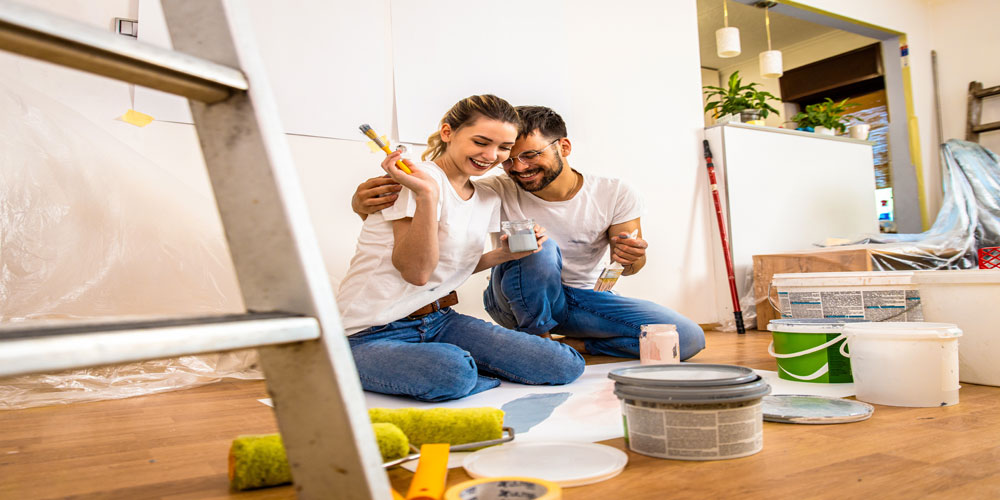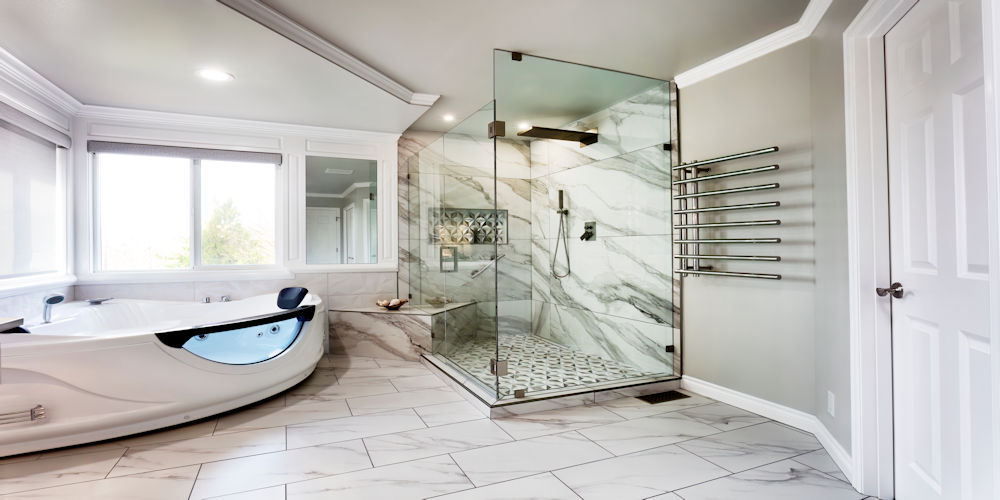Popular UK Home Improvements
In recent years, the UK home improvement market has seen a pronounced surge. Whether driven by rising energy costs, evolving lifestyles, remote working, or simply a desire to increase both comfort and property value, homeowners are investing more in their homes than ever. According to Houzz research, the typical renovation spend has increased significantly, with a median of around £17,000 in 2023 — a 26% year-on-year jump. National World
This post explores the most popular home improvements in the UK today: the projects people are doing, the trends shaping them, and what’s motivating these choices.
Why Home Improvements Are Booming
Before diving into specific improvements, it’s helpful to understand the forces driving this boom:
- Energy Efficiency: With climate concerns and rising energy bills, many UK homeowners prioritise energy-saving upgrades — from insulation to smart heating. barryturnerandson.co.uk+2Houzz+2
- Lifestyle Changes: Hybrid working and flexible living are now the norm. As a result, homes are being reimagined to include home offices, gym spaces, and multifunctional rooms. planithome.co.uk
- Sustainable & Eco-Friendly Materials: There’s a growing trend toward low-impact materials (reclaimed wood, low-VOC paints, etc.), which align with both environmental and aesthetic priorities. planithome.co.uk+1
- Smart Homes: The adoption of smart devices is accelerating. Energy-saving smart thermostats, integrated security systems, and automated lighting are becoming mainstream. The OmniBuzz
- Return on Investment (ROI): Many upgrades not only improve quality of life but also add meaningful value when it comes to resale. According to industry analysis, some projects offer very attractive ROI. Homemove
- Structural Needs: Many UK homes are older (nearly half of the homes in some surveys were built before 1940), so system upgrades — heating, plumbing, electrics — are increasingly common. Houzz+1
Top Home Improvements in the UK
Here are some of the most popular and impactful home improvements happening in UK homes right now.
1. Energy Efficiency Upgrades
a. Insulation
- Loft insulation, wall insulation, and floor insulation are among the most common energy-related upgrades. Homemove+1
- These changes not only reduce bills (by improving heat retention) but also contribute to higher Energy Performance Certificate (EPC) ratings, which are increasingly important. barryturnerandson.co.uk
b. Heating Systems
- Many homeowners are replacing old boilers or integrating modern heat pumps. Homemove
- Smart thermostats are booming. They improve efficiency and allow precise control, which is especially useful in homes with varying occupancy. barryturnerandson.co.uk+1
c. Windows and Ventilation
- Double- or triple-glazed windows are being upgraded not simply for aesthetics but for improved thermal performance. Houzz data shows an increase in window upgrades. Houzz
- Ventilation systems are also being improved to ensure that homes remain energy efficient without sacrificing air quality. Houzz
d. Renewable Energy Systems
- Although still less common, interest in solar panels is on the rise. Houzz
- More ambitious homeowners are considering full retrofitting of older, less efficient homes to bring them more in line with modern standards. The Times
2. Interior Renovations: Kitchens & Bathrooms
a. Kitchen Renovations
- The kitchen remains a high-priority renovation. Projects range from full-scale remodels to more modest upgrades like resurfacing cabinets or updating surfaces. Houzz
- Design-wise, natural materials (wood finishes) are very popular. Wood-drenching (layering wood in cabinetry, furniture, and panelling) is a big trend. National World
- Colour-wise, deeper, more saturated tones are replacing stark whites. Think rich greens, charcoal greys, and earthy hues. planithome.co.uk
- Open-plan kitchen/diner layouts are particularly in demand, aided by knock-through walls, bifold doors, or skylights to maximise light flow. uk-building-services.wixstudio.com
- For value: a good kitchen renovation offers a solid ROI — one analysis estimated 70–80% return. Homemove
b. Bathroom Upgrades
- Bathrooms continue to be a central area of focus. According to Houzz, a significant proportion of renovation spend goes here. Houzz
- Spa-style bathrooms are trending: freestanding baths, rain showers, underfloor heating, and smart mirrors are now “must-haves” for many. planithome.co.uk
- There is a growing popularity for tile drenching: using the same tile across walls and floors for a seamless, cohesive look. Woman & Home
- Functional design is also key: “wet rooms” (fully waterproofed bathrooms where shower and floor are continuous) are increasingly common. Real Simple
- Soft-close fixtures (drawers, cabinet doors) are widely chosen on account of both practicality and a premium feel. Real Simple
3. Structural Extensions & Conversions
a. Loft Conversions
- Loft conversions remain very popular in the UK as a way to add functional space. Owners convert lofts into offices, extra bedrooms, or chill-out zones. uk-building-services.wixstudio.com
- Insulation, soundproofing, and dormer or Velux windows are common to make these spaces comfortable and practical. uk-building-services.wixstudio.com
b. Home Extensions
- With limited space, many homeowners are building extensions (single-storey, two-storey) or knocking through walls to create open-plan layouts. dunamisconstruction.co.uk+1
- Bi-fold or sliding doors connecting to gardens are especially trendy, helping blur the line between indoor and outdoor living. uk-building-services.wixstudio.com
c. Outdoor Living / Garden Rooms
- Outdoor spaces are being transformed into living areas: garden offices, gyms, pergolas, decking zones, or ‘staycation-style’ garden rooms. planithome.co.uk
- Vertical gardens, green roofs, and biophilic design are increasingly employed to bring nature into urban homes. The OmniBuzz+1
4. Design & Aesthetic Trends
a. Biophilic Design
- Natural materials, plant life, and organic textures are very much in trend: wood beams, living walls, linen fabrics, and large windows are being used to bring the outside in. barryturnerandson.co.uk+1
- This design philosophy not only looks good but also boosts mental wellbeing, something that many UK homeowners are prioritising. The OmniBuzz
b. Colour & Statement Finishes
- Bold colour palettes are back: russets, deep navies, dark greens, and terracottas are being used on feature walls and cabinetry. planithome.co.uk
- Wooden panel walls and slatted wood features are making a huge comeback. Searches for such finishes have surged. National World
- Statement lighting (sculptural pendants, oversized fixtures) is being used not just for function but as a design focal point. The OmniBuzz
c. Heritage & Modern Mix
- Many UK homeowners are blending original or period features (like exposed brick, sash windows, cornices) with contemporary finishes and layouts. planithome.co.uk
- This fusion preserves character while updating functionality — ideal for older homes that need both style and performance.
5. Smart Home Integration
- Smart devices are now a core part of renovations: automated heating, lighting, security systems, voice-activated controls. The OmniBuzz
- These upgrades help in energy management, convenience, and safety — all of which are increasingly desirable. barryturnerandson.co.uk
- Home automation also adds a perceived value to modern homes, making them more attractive for future buyers.
6. Sustainability & Eco-Friendly Materials
- Reclaimed wood, bamboo flooring, recycled materials, and low-VOC paints are trending strongly. planithome.co.uk
- Eco-friendly glazing (e.g., thermal or solar glass) is gaining ground. barryturnerandson.co.uk
- These choices align with both environmental awareness and long-term cost savings, especially important as UK homeowners consider whole-life value and efficiency. dunamisconstruction.co.uk
7. Maintenance and System Upgrades
- Many UK homes require work on fundamental systems: heating, plumbing, wiring. In older homes especially, upgrading these is seen not just as necessary but as an investment. Houzz
- Electrical upgrades, rewiring, and smart circuit systems are common as homeowners modernise and make homes safer. National World
- Homes are increasingly considering low-maintenance, durable surfaces (e.g., quartz worktops, composite decking) to reduce long-term upkeep. planithome.co.uk
Regional and Market Trends
- The UK home improvement market was valued at £11.3 billion in 2024 and is projected to grow significantly. MyJobQuote
- According to Hillarys’ research, by 2030 sales in DIY and decorating could reach £30.8 billion. Hillarys+1
- Although high-cost projects (like extensions or loft conversions) are attractive, many homeowners still undertake multiple smaller upgrades. On average, UK homeowners report about 2.7 interior upgrades per year. Hillarys
- Geographically, certain regions are investing more in renovation than others (as indicated by regional research), though demand is widespread. MyJobQuote
Challenges and Considerations
While many improvements are popular, they come with caveats:
- Rising Costs: Material and labour costs have surged. That increase in spend (median £17,000) reflects both ambition and inflation in the renovation space. National World
- Skill Shortages: Skilled trades (electricians, plumbers, carpenters) are in high demand, which can prolong timelines and increase costs. Houzz data shows strong professional involvement in projects. Houzz
- Planning & Regulations: Structural changes (extensions, conversions) require planning permission or building regulation compliance. Homeowners must factor in these hurdles.
- Sustainability Complexity: While retrofit and deep energy upgrades are appealing, full retrofitting (especially of historic homes) is complex, costly, and not always fully reflected in EPC improvements. The Times
- Funding: Not all homeowners can afford major upgrades; many are doing more modest improvements, but financing still poses a barrier for larger, transformative projects.
What’s Next? Emerging Trends to Watch
Looking ahead, here are some trends that could shape the next wave of UK home improvements:
- Full Retrofit Projects: As climate goals tighten, more homeowners may start retrofitting entire homes (not just bits) — improving airtightness, insulation, and installing renewables. The Times
- Green Roofs & Vertical Gardens: Particularly in urban homes, green roofs and living walls are becoming more popular. The OmniBuzz
- Biophilic Wellness Spaces: Rooms designed specifically for wellness, including “quiet zones,” plant-filled corners, or spaces with natural materials, could become even more mainstream.
- Tile Drenching Everywhere: The tile drenching trend — using a consistent tile across multiple surfaces — is likely to spread, not just in bathrooms but also kitchens and feature walls. Woman & Home
- Integrated Tech Beyond Basics: Expect smart systems to become more deeply integrated — e.g., energy management systems, home automation, integrated security, voice or app control.
- Sustainable Financing Models: As retrofit becomes more common, financial models (grants, green mortgages) may evolve to support these energy-saving improvements.
Conclusion
Home improvement in the UK right now is about more than just aesthetics. The most popular projects are those that combine functionality, long-term savings, and design. Whether it’s insulating a loft, upgrading the heating system, creating a flexible home office, or installing bold design elements, homeowners are investing in their properties in meaningful ways.
Energy efficiency and sustainability are leading the pack, not just for environmental reasons but because they make financial sense in the long run. Meanwhile, structural changes — like home offices, extensions, and loft conversions — reflect evolving lifestyles, especially after the shift to hybrid work. On the design front, biophilia, bold colours, and modern-meets-heritage styles are shaping the look of UK homes.
If you’re thinking about improving your own home, consider your priorities: Do you want comfort, cost savings, space, or style? The best improvements often blend these goals.


